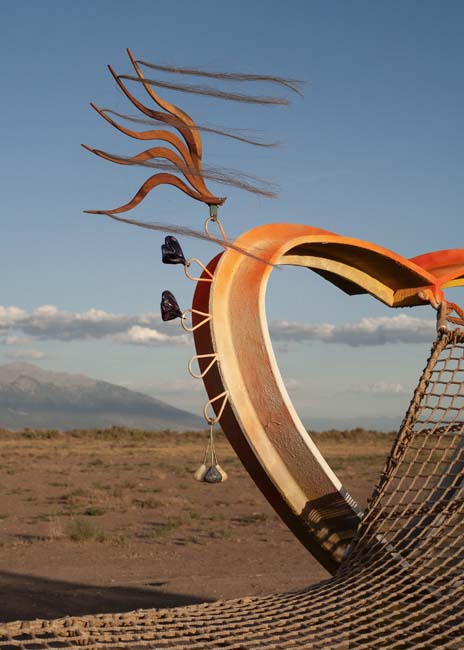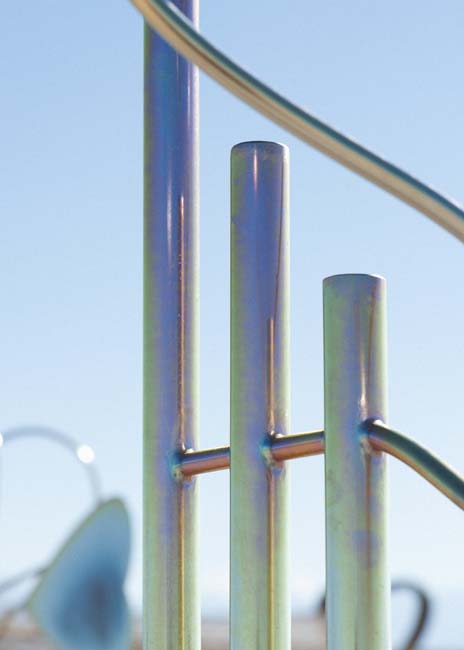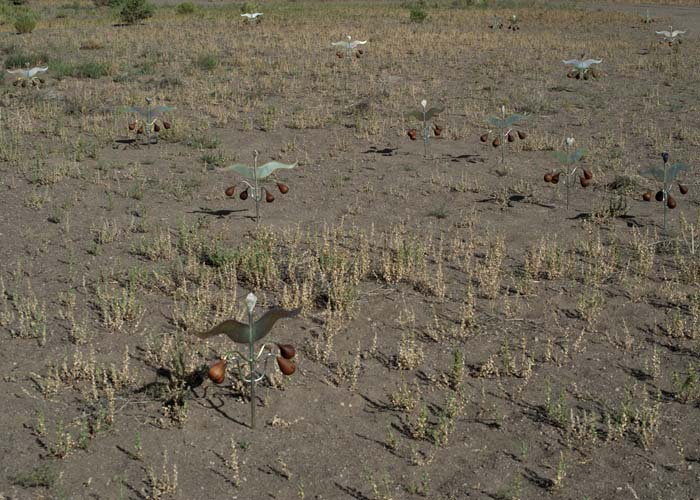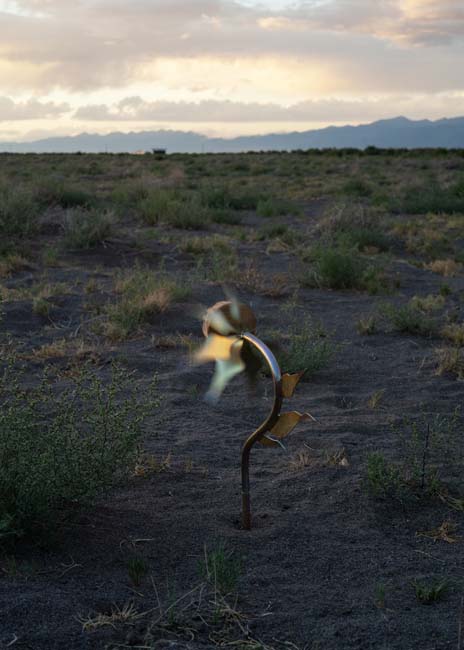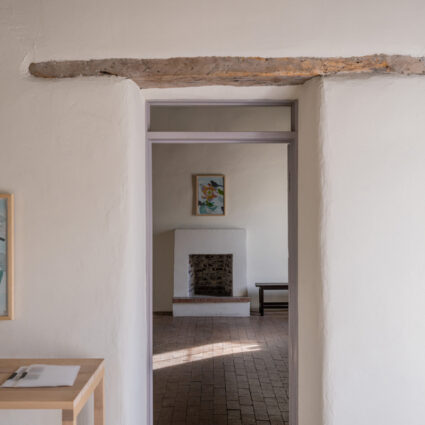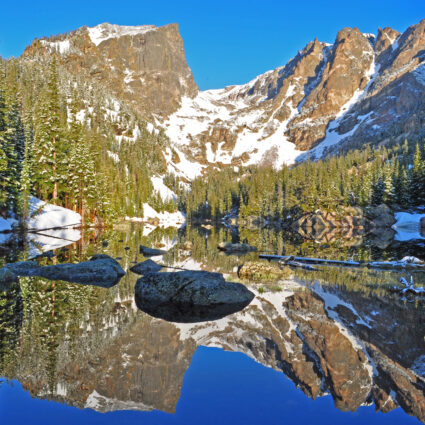Marguerite Humeau’s sculptural installation Orisons punctures 160 acres of unusable potato farmland in Hooper, Colorado, offering healing to a sandhill crane nesting ground undergoing megadrought.
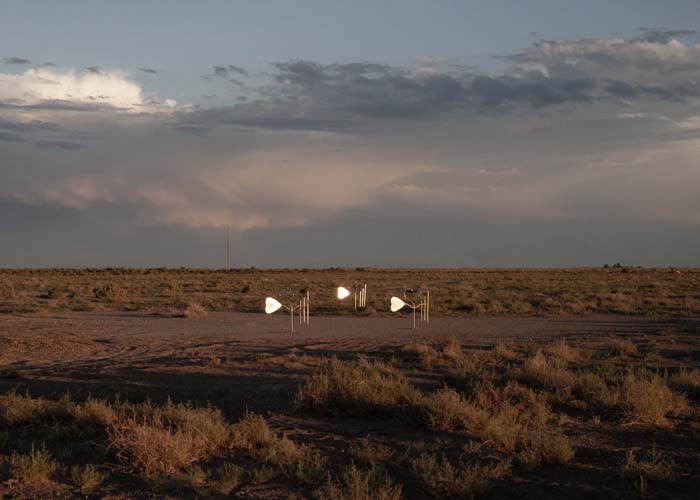
Marguerite Humeau: Orisons
July 29, 2023–June 30, 2025
located on farmland owned by Jones Farms Organics in Hooper, Colorado
During the late-July opening of London-based artist Marguerite Humeau’s Orisons, a shuttle took spectators from the Frontier Drive-Inn in Center, Colorado—a renovated 1950s drive-in theater updated with overnight accommodations—to a fallow piece of cropland in nearby Hooper. Some attendees included local farmers, but most were urbanites who traveled four hours from Denver to the San Luis Valley.
Produced and curated by Black Cube Nomadic Art Museum, mysteriousness shrouded Orisons since the spring. Initial press releases minimally revealed Humeau’s intent to engage with 160 acres of unusable potato farmland owned by Jones Farms Organics.
On the shuttle to see the work, a young boy sporadically pointed out the window, asking his mother, “Is that art?” as we passed a building with a barrel-vaulted roof and the bright vegetation of high-elevation desert crops. Arriving at a rusty cattle corral, I wondered how the subtlety of Humeau’s art made sense to the boy as the crowd collectively scanned the flat and, initially, unremarkable expanse.
Competing with a backdrop of the Collegiate Peaks—a range of grandiose mountains each breaching 14,000 feet—and the bright, amorphous slopes of the Great Sand Dunes, Humeau’s numerous but camouflaged flora-and-fauna-inspired sculptures grovel before this macroscopic drama. Fortuitously arriving at golden hour, many of us remained distracted by the natural landscape, snapping pictures of ourselves in the pre-gloaming light, the dust storms on the horizon, and the play of our shadows stretching over scorched earth. Meanwhile, Humeau’s visual renditions of “prayers,” the definition of orisons, waited for reverence.
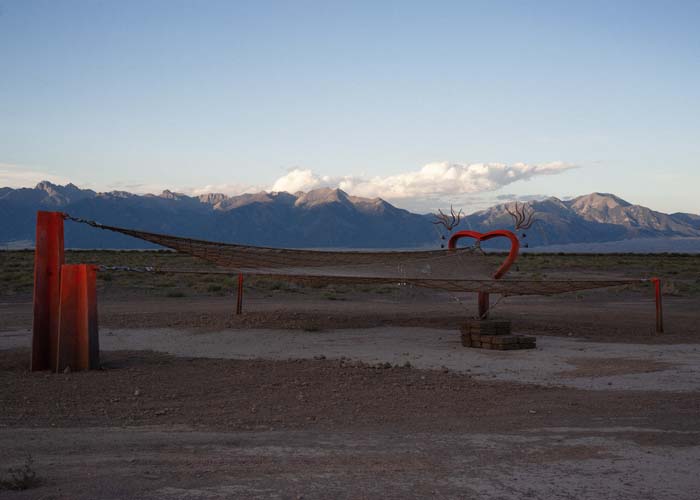
The scale and dispersal of Humeau’s work reminded me of an Easter egg hunt. I sought orientation by consulting a circular cartograph resembling an astrological natal chart that references the annular path of a pivot irrigation system. Presenting a conceptual and navigational guide to the eighty-four sculptures puncturing the area, the map’s key catalogues the various recurring objects such as Sandhill Crane Songs, wind-activated recycled steel pipe instruments that airily hum in the breeze.
The most prominent objects dotting the field were the Flying Rain Sandhill Crane structures with large, jungle-gym-sized rope hammocks representing sandhill crane wings. These nets trailed behind heart-shaped steel frames, representing the bird’s face, crowned with waving strands of feather-like horsehair and earring-like stoneware. If not for the children gleefully nesting there, these pieces resembled an abandoned and otherworldly playground.
Indeed, Humeau intends to transport us beyond the here and now, raising questions about “post-climate” futurity by projecting pre-apocalyptic forecasts onto this desertifying canvas.1 Yet, as my feet repeatedly and frustratingly sank into empty kangaroo rat burrows, I remained fixated on the present, unable to shake my trespasser’s guilt for trundling through this still-inhabited, living ecosystem with its ancestral connection to Indigenous communities, including the Ute and Navajo (Diné).
Consulting with Indigenous and various community members, historians, scientists, and mystics (among other experts), Humeau conscientiously evades thoughtless treading. Additionally, under the counsel of geomancers, prognosticators who unveil the (in)auspicious signs of geographic features, Humeau probes the land’s sacredness and suffering. Imaging herself as an acupuncturist treating the land’s ailments, she discerningly pierces the dirt with her palliating steel-, stoneware-, and hardwood-made pieces in places divined as containing sadness, sweetness, or ambivalence.
This mystical engagement with the land insinuates the nearby New Age events in the town of Crestone and Saguache County’s purported vortexes at the UFO Watchtower, a roadside attraction and campground on “The Cosmic Highway” (Colorado State Highway 17). Started by a failed cattle rancher, the UFO Watchtower, like Orisons, invokes the occult to reimagine and reinvigorate infertile ranching property.
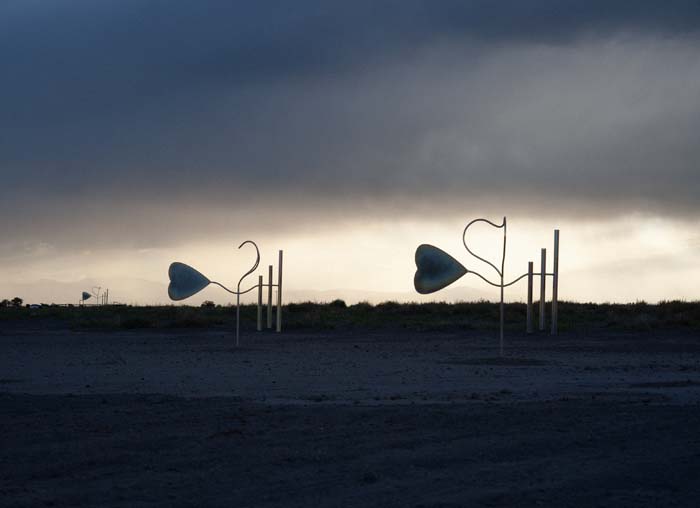
While whimsical Americana characterizes the arguable Land Art of the UFO Watchtower, Humeau’s big, sundry thoughts make her work more difficult to specify, and subvert the impact of her small, poetic orisons. Despite Humeau’s extensive research and sensitivity, some melancholic lack haunts Humeau’s engagement with these 160 acres. Perhaps I wanted a more compelling motivation behind European Humeau’s “health report” (to use her phrasing) on a piece of indubitably struggling United States farmland undergoing unavoidable megadrought and the unprecedented effects of global climate change.
As I beheld thirty-six spinning Spurge Dancer sculptures (numerically reflecting the artist’s age) on a patch labeled “150-year-old Sadness” on the Orisons map, I contemplated Humeau’s drive to offer such unavailing amelioration. I further pondered if I unjustly judged Humeau’s impulses to study, classify, map out, sanctify, and remedy a piece of land as too dangerously adjacent to ongoing and harmful settler-colonialist mentalities and epistemologies.
Despite my apprehensions, Humeau indeed curates a space for play and curiosity. For the next two years, Humeau invites you to consider the historical, social, and ecological factors that inspire us to project our own egos and emotions onto an indifferent habitat.
